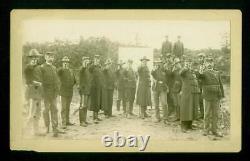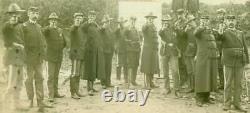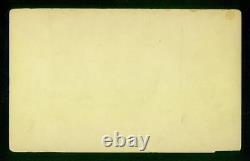
- Homepage
- Conflict
- Photo Type
- Album (10)
- Albumen (14)
- Ambrotype (199)
- Cabinet Photo (67)
- Cdv (480)
- Cdv & Tintype (6)
- Cdvs & Tintypes (7)
- Daguerreotype (84)
- Gelatin Silver (13)
- Mixed (3)
- Negative (10)
- Negative Photo (4)
- Opalotype (4)
- Other (4)
- Photograph (4)
- Snapshot (3)
- Stereoview (23)
- Tintype (526)
- Tintypes (3)
- Unknown (12)
- ... (5558)
- Subject
- Children & Infants (21)
- Civil War (31)
- Civil War Soldier (12)
- Ethnic (17)
- Family (24)
- Fashion & Costumes (10)
- Figures & Portraits (149)
- Genealogy (10)
- Historic & Vintage (90)
- History (24)
- Men (59)
- Men, Civil War (56)
- Men, Military (39)
- Military (98)
- Military & Political (578)
- Military & War (14)
- Portrait (15)
- Portraits (14)
- Soldier (12)
- Women (19)
- ... (5742)
- Theme
- Americana (41)
- Americana, Fashion (18)
- Americana, Militaria (17)
- Antique (8)
- Art (7)
- Civil War (14)
- Conflicts & Wars (6)
- Fashion (19)
- History (44)
- History, Militaria (10)
- Love (6)
- Militaria (1046)
- Patriotic (7)
- People (21)
- Politics (14)
- Portrait (67)
- Portrait, Man (22)
- Stamps (23)
- Travel (6)
- Victorian (7)
- ... (5631)
- Type
- Belt Buckle (3)
- Carte De Visite (2)
- Cdv (3)
- Cdv Photograph (15)
- Daguerreotype (3)
- Full Cdv Photo Album (2)
- Illustrated Book (3)
- Negative Film Photo (4)
- Pendant (3)
- Photo Album (3)
- Photo Frame (2)
- Photograph (1358)
- Photograph Album (50)
- Picture Book (8)
- Picture Frames (8)
- Print (3)
- Real Photo (rppc) (10)
- Tintype (9)
- Tintype Photo (4)
- ... (5541)
- Unit Of Sale
S15, 517-13, 1880s, Cabinet Card, Civil War Reunion GAR, Scranton, PA, (DeWitt)





S15, 517-13, 1880s, Cabinet Card, Civil War Reunion GAR, Scranton, PA. Photograph, Civil War Reunion GAR, Scranton, Pennsylvania. Very rare image, possible one of a kind. Subjects: People, Soldiers, Officers, Uniforms, Medals, Kepi Hats, Fashion, Encampment, Tents, Nature, Trees, Swords, Guns, Shooting Practice.
Card size: 5.25" x 8.5". Was a style of photograph which was widely used for photographic portraiture after 1870. It consisted of a thin photograph mounted on a card typically measuring 108 by 165 mm (4+1? The carte de visite was displaced by the larger cabinet card in the 1880s. In the early 1860s, both types of photographs were essentially the same in process and design. Both were most often albumen prints, the primary difference being the cabinet card was larger and usually included extensive logos and information on the reverse side of the card to advertise the photographer's services. However, later into its popularity, other types of papers began to replace the albumen process. Despite the similarity, the cabinet card format was initially used for landscape views before it was adopted for portraiture. Some cabinet card images from the 1890s have the appearance of a black-and-white photograph in contrast to the distinctive sepia toning notable in the albumen print process. These photographs have a neutral image tone and were most likely produced on a matte collodion, gelatin or gelatin bromide paper. Sometimes images from this period can be identified by a greenish cast. Gelatin papers were introduced in the 1870s and started gaining acceptance in the 1880s and 1890s as the gelatin bromide papers became popular. Matte collodion was used in the same period. A true black-and-white image on a cabinet card is likely to have been produced in the 1890s or after 1900. The last cabinet cards were produced in the 1920s, even as late as 1924. Owing to the larger image size, the cabinet card steadily increased in popularity during the second half of the 1860s and into the 1870s, replacing the carte de visite as the most popular form of portraiture. The cabinet card was large enough to be easily viewed from across the room when typically displayed on a cabinet, which is probably why they became known as such in the vernacular. Whatever the name, the popular print format joined the photograph album as a fixture in the late 19th-century Victorian parlor. VG-VG/EX (some edge & corner wear, staining on the front, chipping).Please see scans for actual condition. This Cabinet Card would make a great addition to your collection or as a Gift (nice for Framing). Newest Collections with FREE S&H.
To see all my Postcards. To see all my Movie Items. To see all my Disney Items. To see all my Baseball Items. To see all my Boy Scout Cards.
To see all my Stereoview Cards. Add me to your Favorite Sellers and Sign up for my Newsletter. Ground Advantage (the old 1st class). Please look at my other Auctions for more Collectibles of the 1800's-1900's. Get Supersized Images & Free Image Hosting.
Create your brand with Auctiva's. Attention Sellers - Get Templates Image Hosting, Scheduling at Auctiva.
